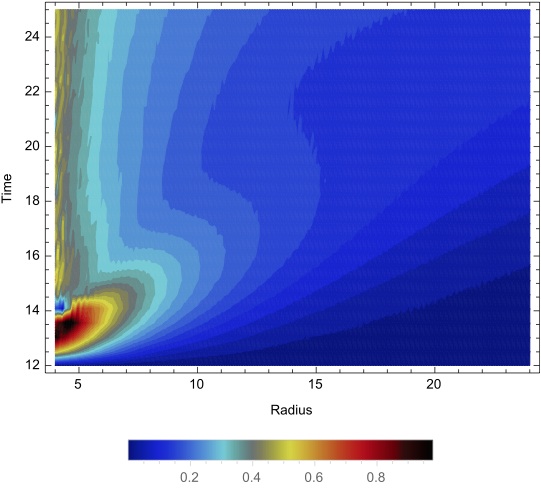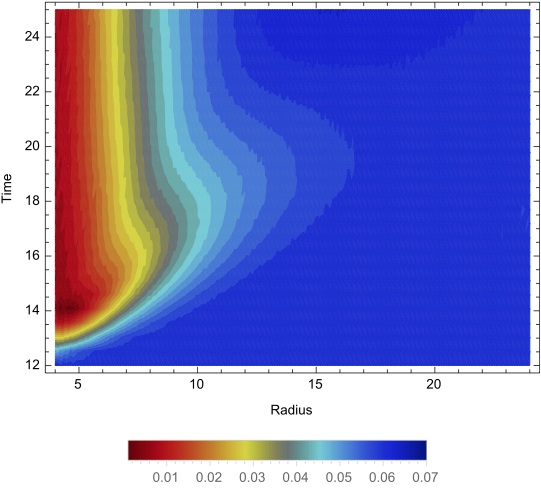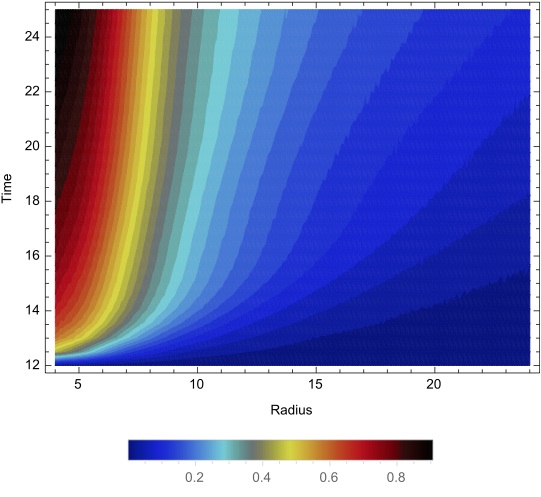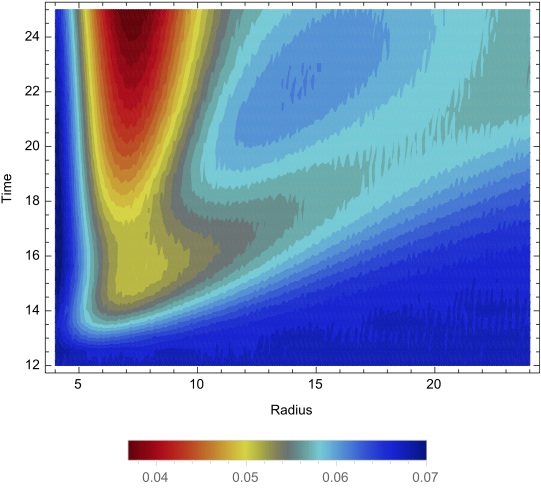rebecca.nealon@monash.edu
Postgraduate Student
School of Physics and Astronomy
Monash University, Clayton
Australia, 3800
Apsidal precession, disc breaking and viscosity in warped discs
We demostrate the importance of general relativistic apsidal precession in warped black hole accretion discs by comparing three-dimensional smoothed particle hydrodynamic simulations in which this effect is first neglected, and then included. If apsidal precession is neglected, we confirm the results of an earlier magnetohydrodynamic simulation by Krolik & Hawley (2015). We thus show that at least in this case the alpha-viscosity model produces very similar results to those of simulations where angular momentum transport is due to the MRI. This is shown below, with the twist (left) and tilt (right) shown in the same style as Krolik & Hawley (2015).


We then include apsidal precession in our simulations, as in Nealon, Price & Nixon (2015). The comparison of twist is shown here, with apsidal precession neglected on the left and included on the right.


A comparison of the tilt with and without apsidal precession similarly identifies that including apsidal precession significantly changes the predicted disc evolution. The final profile with a nonzero inner edge tilt and an inner edge oscillation is consistent with published analytic results.


Our simulation inclined at 12 degrees shows no evidence of disc breaking, as in Krolik & Hawley (2015). We repeat our simulation at 30 degrees for the same amount of time, and plot the density of both below. As the discs evolve, the inner ring of the highly inclined disc (right) has a small inclination when compared to the outer ring.